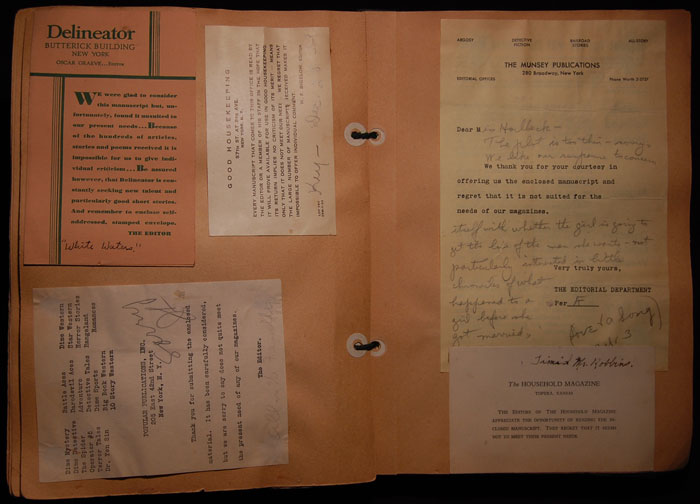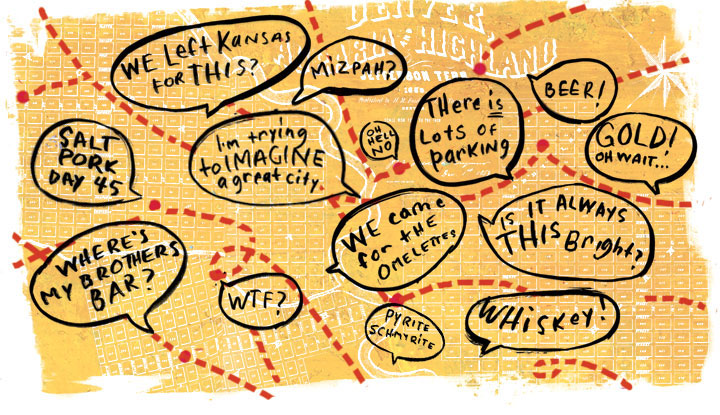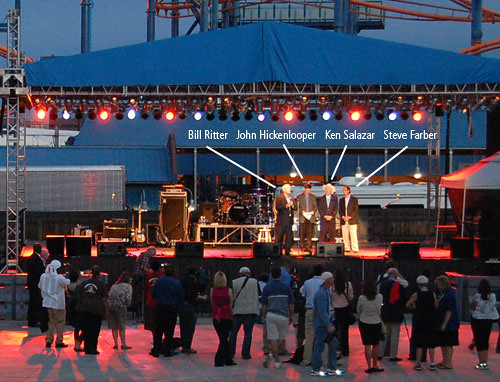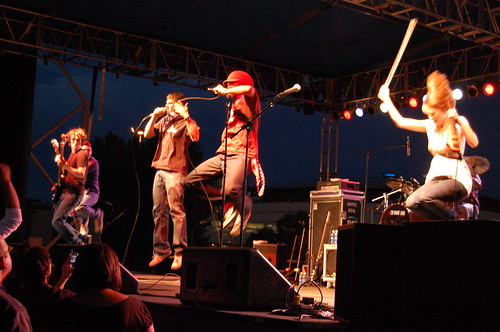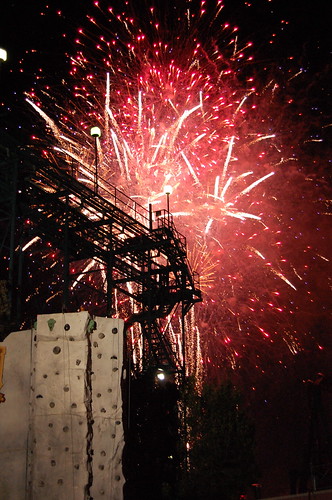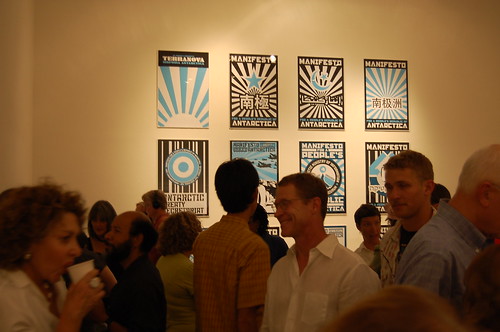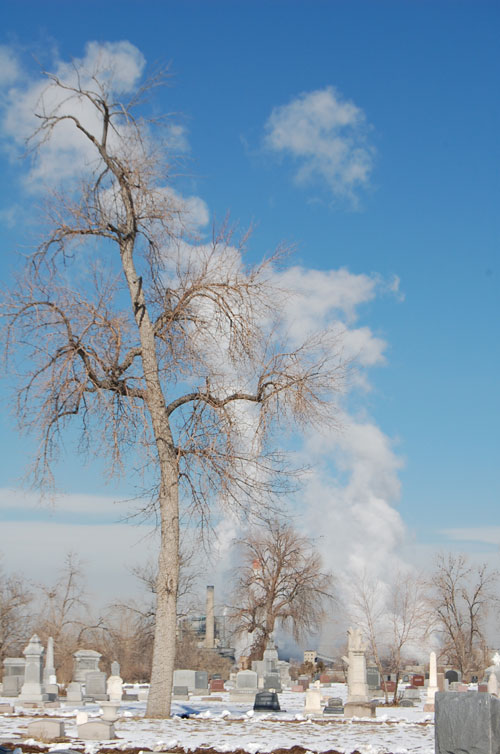The city of Denver, led by the Denver Office of Cultural Affairs, did a great job of bringing world class art to town during the DNC through the Dialog:City program. While I would have liked to have seen some additional involvement from local artists, the program offered a thought-provoking combination of installation and performance.
I had a conversation with Rudi Cerri of DOCA, and he pointed out that Dialog:City was intended primarily as a program for the residents of Denver, and not for the attendees at the Convention. It’s unfortunate (though understandable) that it took place during the DNC – many denverites were staying away from downtown and all the traffic hassles, so the events weren’t as well-attended as they might have been otherwise. Nonetheless, it was great fun for those of us who were able to make it.
I didn’t make it to everything, but the following are some thoughts and photos from where we did make it to.
Terra Nova: Antarctic Suite
On Sunday night in the Ellie Caulkins Opera House, DJ Spooky (Paul Miller, formerly known as the ‘subliminal kid’) offered an hour or so of electronic soundscapes with imagery overhead addressing the issue of the antarctic ice shelf and global warming.
Although the political component of the imagery was a bit obvious and risked preaching to the choir (e.g., US residents create more greenhouse gasses than anyone else in the world), overall the combination of music and images had a hypnotic feeling that was reminiscent of old school performance art.
I snapped a couple of photos before I was told it wasn’t allowed due to potential copyright violations (which I found pretty amusing given Paul Miller’s writings on remix culture and the art of the mashup.


A Spiritual Singalong
On Monday, Jill and I headed down to the DCPA, where we caught part of Ann Hamilton’s performance piece entitle “O”. It involved a combination of adult and child choirs, including members of The Spirituals Project (started by the remarkable Dr. Art Jones of the University of Denver).
The work was essentially a choral singalong in a unique urban setting – the choirs were on the stairs in the stairs of the DCPA Galleria, while the audience were on the ground. The roundness of the long O sound that was used to anchor the singing, combined with the acoustics of the galleria, gave the event a fullness and richness that worked to complement the simplicity of the staging.
At the end of the performance, the chorus and audience joined in singing America The Beautiful. It was pretty emotional, and I although I’m not usually overly patriotic, I found myself choking up (twice in one night, actually – the second time was during Michelle Obama’s speech).
Jill and I had the chance to meet Ann on Tuesday; she was extremely gracious and easy to talk to. She said that music has been increasingly important for her work in recent years, including at her Acoustic Tower in California, where she has worked with Meredith Monk, among others. This photo doesn’t really do justice to the experience, but it gives some sense of what went on there.

Images from Iran
Over in Civic Center Park, just across from where the police and anarchists were having a bit of an altercation, there was an independently produced installation called “Pictures of You: Images From Iran.” The artist, Thomas Loughlin, wanted to show the connections between people from around the world; the portraits of iranians are printed on translucent fabric and hung on the walls and across the ‘halls’ of a mosque-like structure. All in all, quite a beautiful effect.


Luke Dubois: From Gentleman to Terror
Luke Dubois’ installation, called “Hindsight”, uses the familiar eye chart as the starting place to analyze the contents of State of the Union Addresses from Washington to Bush. He included a separate panel for each address. The results offers some fun and startling insights into the concerns of the country at different times in our history.
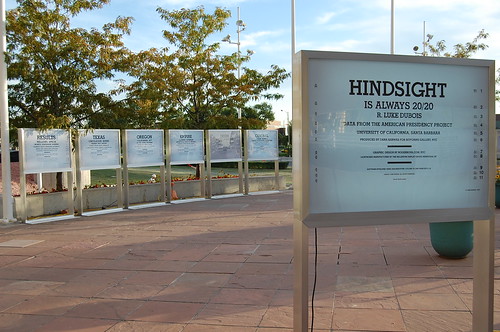
It turns out that “Gentleman” was the most common word in Washington’s speeches, while “Terror” was the most common in the shrub’s addresses. No big surprise there, I suppose.
During the course of the convention, there were docents available to explain the various works, and one of them (the best one, from my perspective) was my mom, who did her part to help explain the details of American history as explored by Luke Dubois. Here’s a photo of her in front of Bill Clinton’s State of the Union roundup. Oddly, she didn’t want her picture taken in front of George W Bush’s tablet.
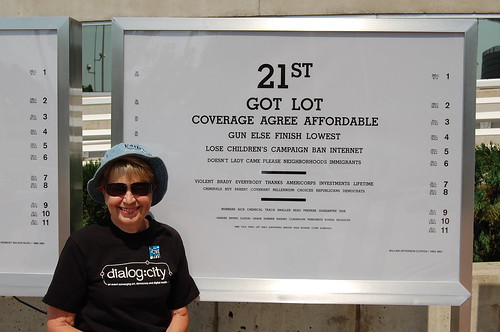
We didn’t make it everything – I was sorry to miss Krzysztof Wodiczko’s ‘Veteran Vehicle Project’ (I just saw the humvee during the day, not while it was projecting at night, and only saw Minsuk Cho’s Air Forest in City Park from a distance. But still, it was great to see that culture can be explored in conjunction with the american political process.
